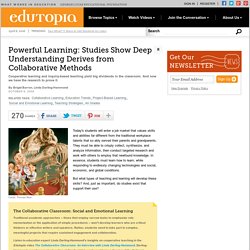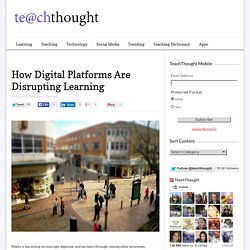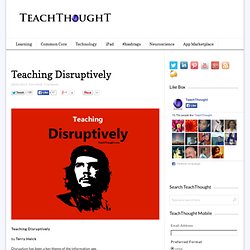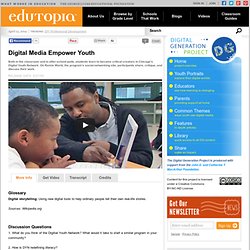

Education as it should be – passion-based.
Genius Hour - Where Passions Come Alive. Spaces, places, tools n apps. Teachers Embrace 'Deep Learning' - experiencing vs testing. New Pedagogies for Deep Learning (PDF file) Powerful Learning: Studies Show Deep Understanding Derives from Collaborative Methods. Today's students will enter a job market that values skills and abilities far different from the traditional workplace talents that so ably served their parents and grandparents.

They must be able to crisply collect, synthesize, and analyze information, then conduct targeted research and work with others to employ that newfound knowledge. In essence, students must learn how to learn, while responding to endlessly changing technologies and social, economic, and global conditions. But what types of teaching and learning will develop these skills? And, just as important, do studies exist that support their use? A growing body of research demonstrates that students learn more deeply if they have engaged in activities that require applying classroom-gathered knowledge to real-world problems.
Research shows that such inquiry-based teaching is not so much about seeking the right answer but about developing inquiring minds, and it can yield significant benefits. Project-Based Pathways Good Signs. How Digital Platforms Are Disrupting How Learning Happens. Media is becoming increasingly digitized, and we learn through, among other processes, consumption of media.

It makes sense then that digital platforms just might be changing the way learning happens. A “platform” can be defined as an app, a website, an eLearning environment, or a collaboratively curated content source. 6 Examples Of Digital Platforms 1. Apps: Phonics Genius, Frog Dissection, Google Earth. Teaching Disruptively. Teaching Disruptively by Terry Heick Disruption has been a key theme of the information age.

Disruption found legs in the 1990s under the careful study of Harvard professor Clayton Christensen. Christensen studied macro business trends over decades, and saw the small, lithe business able to do things that large, cumbersome corporations could not. This was decades ago, though—a lifetime before the current age of information and digital ooze that billions of people access daily. And ironically becoming giants themselves. The life cycle here, in both disruption or hyperdisruption, is like everything else—accelerated and blurred through that acceleration, to the point where those that control the information and its access—like Google and Apple—are both disrupting (e.g., cable television) and mitigating disruption (e.g., by purchasing patents and potentially competitive startups in a frenzy).
Gimme a minute. The teacher that asks Why? The teacher that refuses to “teach to the test.” "We've pretty well proven that deep learning doesn't occur in rows. Ken Whytock on flickr. Digital Media Empower Youth. Asia Roberson: This chair is for the presenter.

This is for the person who created the trailer. You're going to say how you decided to do your trailer. Then we'll do warm and cool feedback. Narrator: In this digital storytelling class at Carter G. Woodson Middle School on the south side of Chicago, students are learning to express themselves using new media technologies. Student: I liked how you incorporated everything together and made it dramatic. Narrator: And learning how to critique what they see. Student: Because it seemed like the sound effects took over and you really couldn't hear yourself. Narrator: Carter G. Nichole Pinkard: The Digital Youth Network takes up the challenge preparing kids for the year 2020 and beyond.
Akili Lee: If you could if you know your account, log in. Nichole Pinkard: So we've tried to allow kids to sort of learn on demand. Text talk - IMglish.